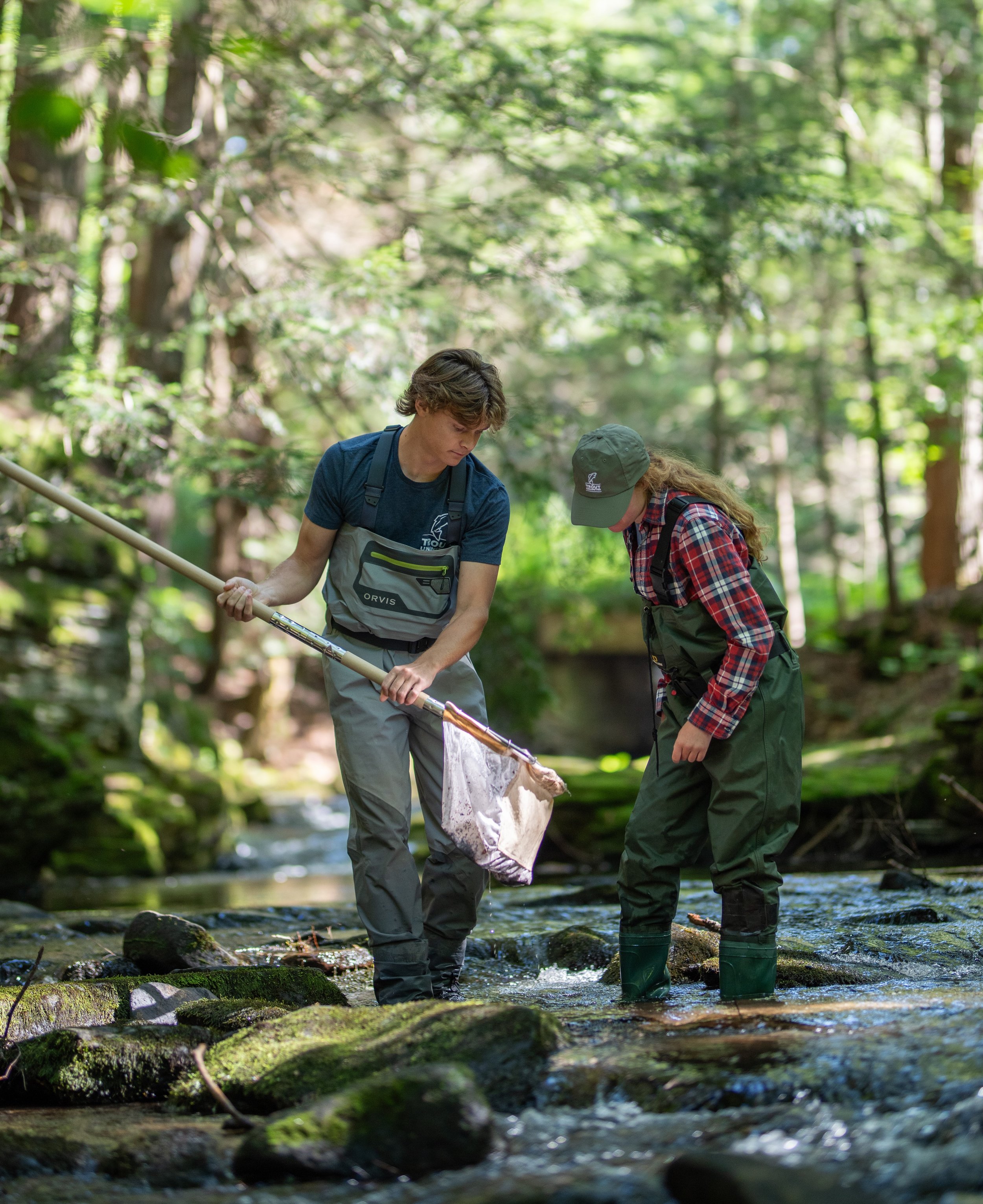Macroinvertebrate Sampling
What are macroinvertebrates and why are they important?
An aquatic macroinvertebrate is an insect in their larva or nymph stage. Macroinvertebrates are an important part of the ecosystem. They provide food for the other species that inhabit the water, they also help recycle nutrients throughout their environment. Some species of macroinvertebrates are more sensitive to pollution than others, making them indicator species. The crew is looking to determine overall stream health.
How does the crew collect data on macroinvertebrates?
The UDRCC Crew performs macroinvertebrate surveys throughout the watershed. They collect the macroinvertebrates by using their feet to loosen up the substrate and dislodging macroinvertebrates and then collect them in nets that they place behind them downstream. They collect samples from three different sections of the stream, they sample in pools, riffles and leaf packs. Each of these three mini environments are favored by different species of macroinvertebrates, so it is important to collect species from each section. The crew sorts the macroinvertebrates in trays, so they can record the variety of macroinvertebrates that they find. After they record the invertebrates and collect the data, they then release the macroinvertebrates back into the water.
Why are macroinvertebrate surveys needed?
The crew does macroinvertebrate surveys to determine overall stream health. The more pollution sensitive species they find the better quality the water should be.
After data is compiled and analyzed for each of the selected stream sections, they will be prioritized for future study/projects based on the findings. Some reaches may be identified as needing protection to not degrade their high quality, and projects to improve water quality will be identified in impacted sections.







